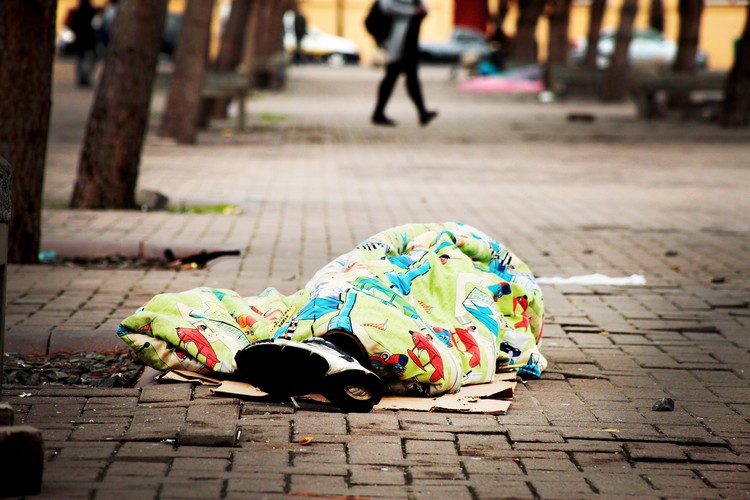
A man sleeps on the Grand Parade, Cape Town. Archive photo: Masixole Feni
15 September 2017
The City of Cape Town is to try a new approach to deal with homeless people who live on the streets. Although the City emphasises reintegration in its policy documents, its past efforts have often been overshadowed by persistent accusations of abuse leveled at law enforcement, and a widely publicised incident of a ward councillor calling for a protest against homeless people. It has also been criticised for a failure to communicate with homeless people and their advocates in civil society.
At a public meeting on 4 September, Mayoral Committee Member for Safety, Security and Social Services JP Smith admitted that the law enforcement approach had not succeeded.
After presenting an overview of homelessness in Cape Town, Smith spoke at length about his experience pursuing this approach. This has often involved targeting homeless people with fines and removal using public space by-laws.
Smith said the City will continue to enforce its by-laws, but such a strategy has proven itself a “lost cause” as a long-term solution to the problem, leaving social development as the only viable strategy.
He specifically spoke about homelessness in ward 115, which stretches from Green Point to Paarden Eiland and includes the city centre, and ward 77, which includes the suburbs on the edge of the city bowl such as Vredehoek and Tamboerskloof.
Smith said a “big chunk” of the City’s budget has been reallocated from enforcement operations to development projects over the past year. One of the newer initiatives is to create open-air, partially enclosed “safe spaces” to address both the shortage of shelter bed space and that many homeless people don’t like the restrictive rules on conduct imposed by the shelters. Smith said that three-quarters of people living on the streets resist going to existing shelters.
Safe Spaces will have a much more accommodating environment, where the official attitude toward things like alcohol and families – often separated in traditional shelters – will be more “approachable”. As in most shelters, occupants are to have access to beds, kitchen and ablution facilities. Storage lockers and counselling services will also be provided.
During the day the City plans to put the sites to other uses – a hub providing social services or essential documents such as IDs and medical services through staff from the City clinics. Long-term commitment to the safe space will be encouraged by giving the homeless entitlement to Expanded Public Works Projects employment.
Smith says that of the homeless people the City interviewed, 85% would be willing to use the safe spaces.
He cautioned that implementing the initiative successfully without creating new problems would be difficult. But Smith said it would be “foolish” not to try as existing solutions have proven unviable.
He said the first of the eight planned sites was to be established under Culemborg bridge and would be operational by February 2018.